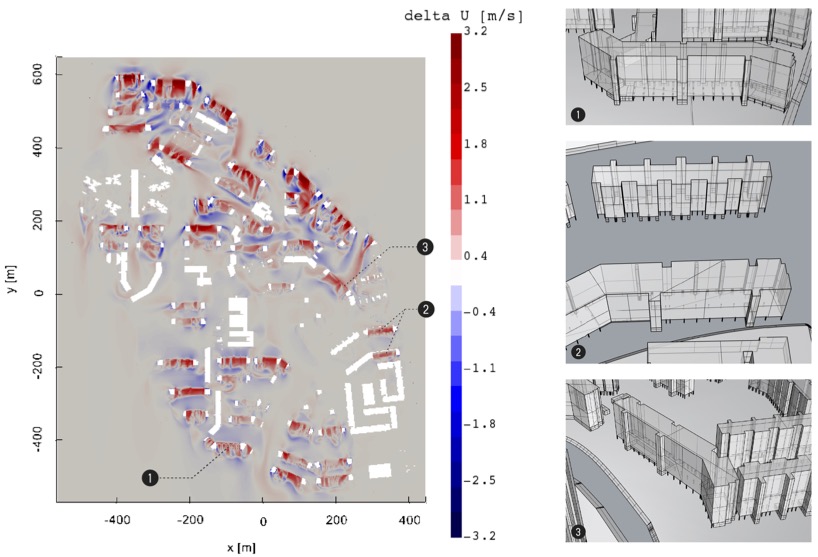Abstract
Rising temperatures due to climate change and the increased Urban Heat Island (UHI) effect both have a major impact on Singapore’s outdoor comfort. Research has reported an average UHI in Singapore of 4°C, which can even exceed 7°C at some times of the day. (Acero & Ruefenacht, 2017) Increasing convective surface heat transfer from the human body by means of induced wind speeds is an important strategy to improve outdoor thermal comfort. However, the combination of its high urban density, leading to a considerable number of obstructions for urban wind flows, and the generally low wind speeds due to its geographical proximity to the equator makes urban ventilation in Singapore challenging. (Acero & Ruefenacht, 2017) Since the 1970s, void decks, open spaces at the ground floor of buildings, have become a typical characteristic of public housing flats in Singapore. These have been shown to potentially increase wind speeds by more than twofold. (Chew & Norford, 2019) However, the effect of void deck geometries on the imbalance between outdoor thermal and pedestrian wind comfort in a realistic urban setting has not been addressed before.
Hence, the main research question of this thesis was formulated as follows: How can the geometry design of void decks be optimized to enhance urban ventilation for outdoor thermal comfort in Singapore while ensuring good pedestrian comfort? A strong mismatch between pedestrian wind comfort and outdoor thermal comfort was observed in the study area with the simulated monsoon wind conditions. This marks the importance to perform wind microclimate analyses in a tropical environment as Singapore, focusing on both aspects. This work demonstrates a design methodology that combines parametric design tools with CFD (computational fluid dynamics) simulations with the aim to make better wind-informed design decisions for an urban context.
Using a parametric building model, ten void deck geometry variants were generated and compared. The implications of the observed flow pattern in terms of urban planning were clarified. For example, while a horizontally converging void deck geometry was found to be effective at directing the urban ventilation towards a target location due to the funnel-shaped induced wind speed region downstream, horizontally diverging void decks led to a more evenly spread region of accelerated flow along the void length. The highest amplification factors inside the void deck were obtained for a vertically diverging geometry. This geometry was subsequently applied to all the buildings facing the prevailing wind directions in the study area, Clementi, using a parametric urban model. This model allows the user to apply various void deck geometries to different building groups independently from each other based on their orientation. A comparison of the wind speed and air temperature distributions after the urban-scale intervention to the current situation showed a wind speed increase and temperature decrease in almost all the void decks. While the amplified wind speed region extended downstream of some void decks, other areas in between the buildings showed a slowed down wind flow. The temperature effects were more extreme at the more closely-packed areas with a smaller distance in between the buildings. Overall, it was concluded that the void deck modifications did not only affect the local wind microclimate inside the void decks, but also altered the wind conditions in between the buildings. Ideally, these wind speed-amplifying void decks should be used in combination with other urban cooling strategies.
Main finding: the proposed workflow was demonstrated for the geometry design of void decks, but is also applicable in the optimization process of other building features which may affect the urban wind microclimate, such as canopies and building podia.
Main limitation: the study was purely numerical, and further cases compared with experiments is needed.
